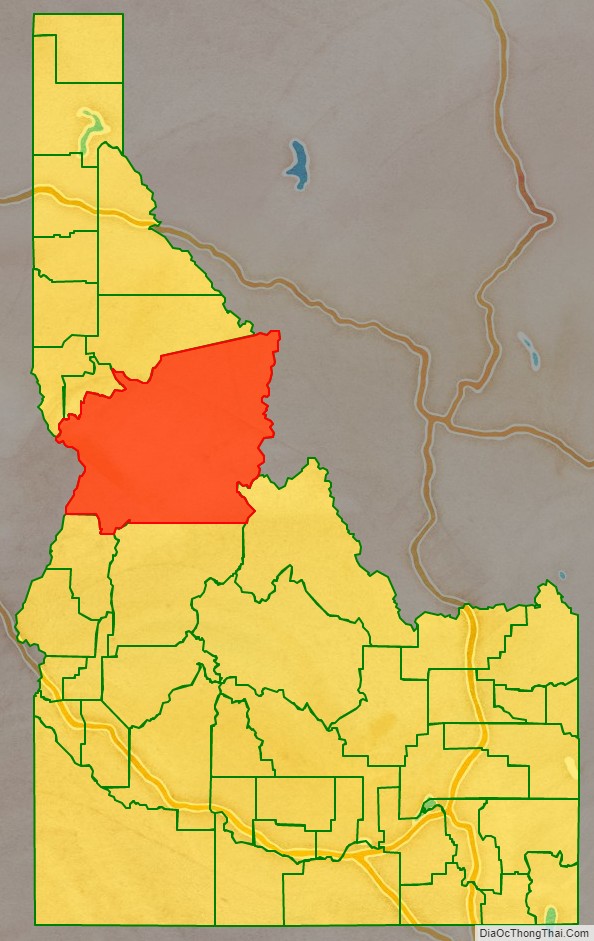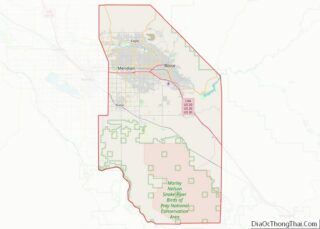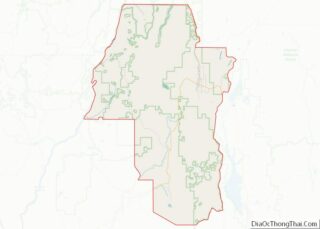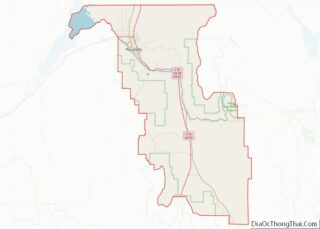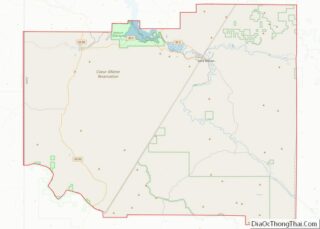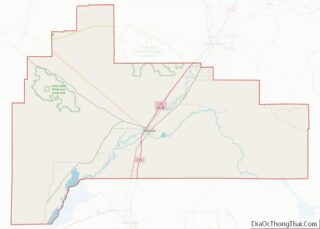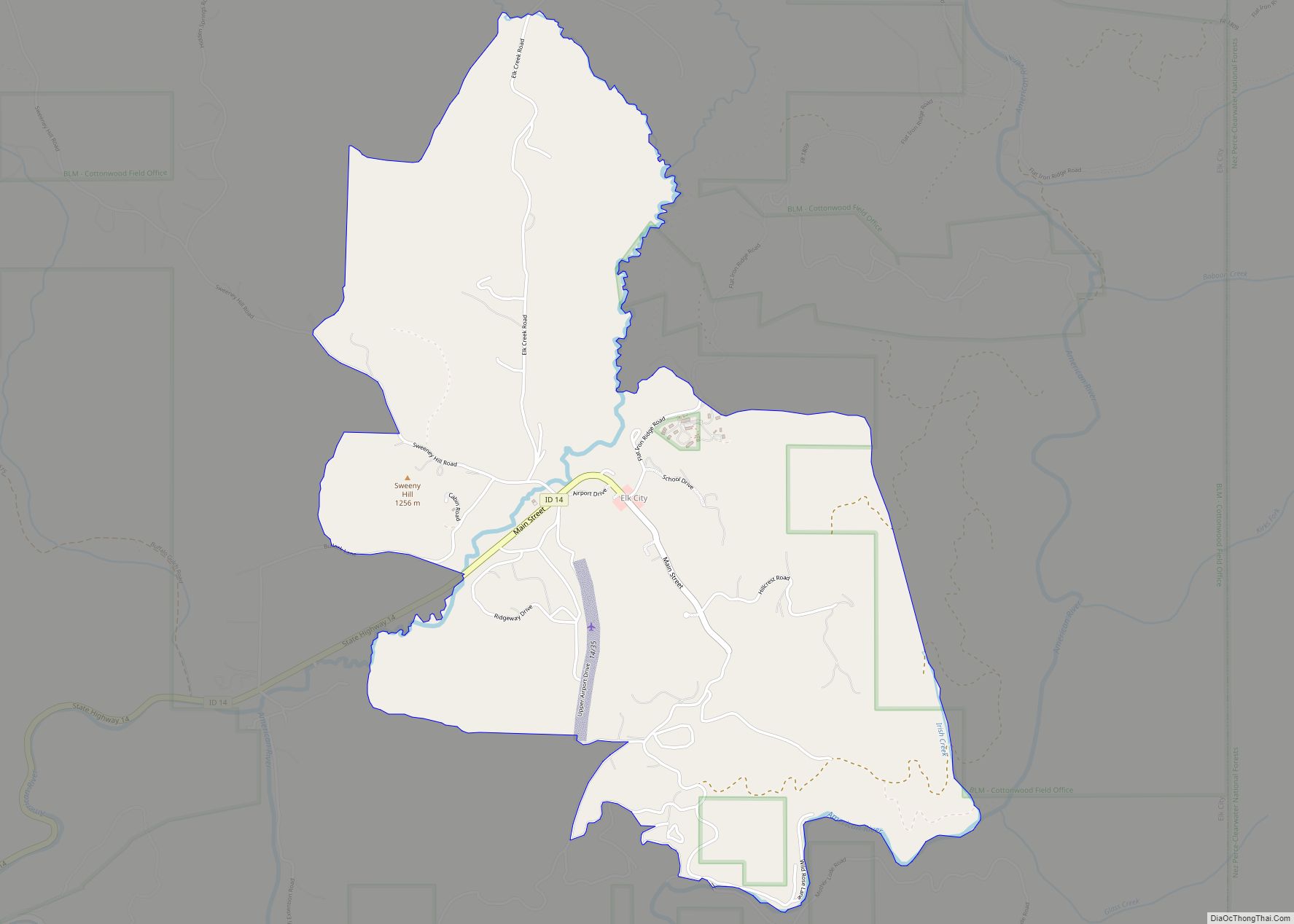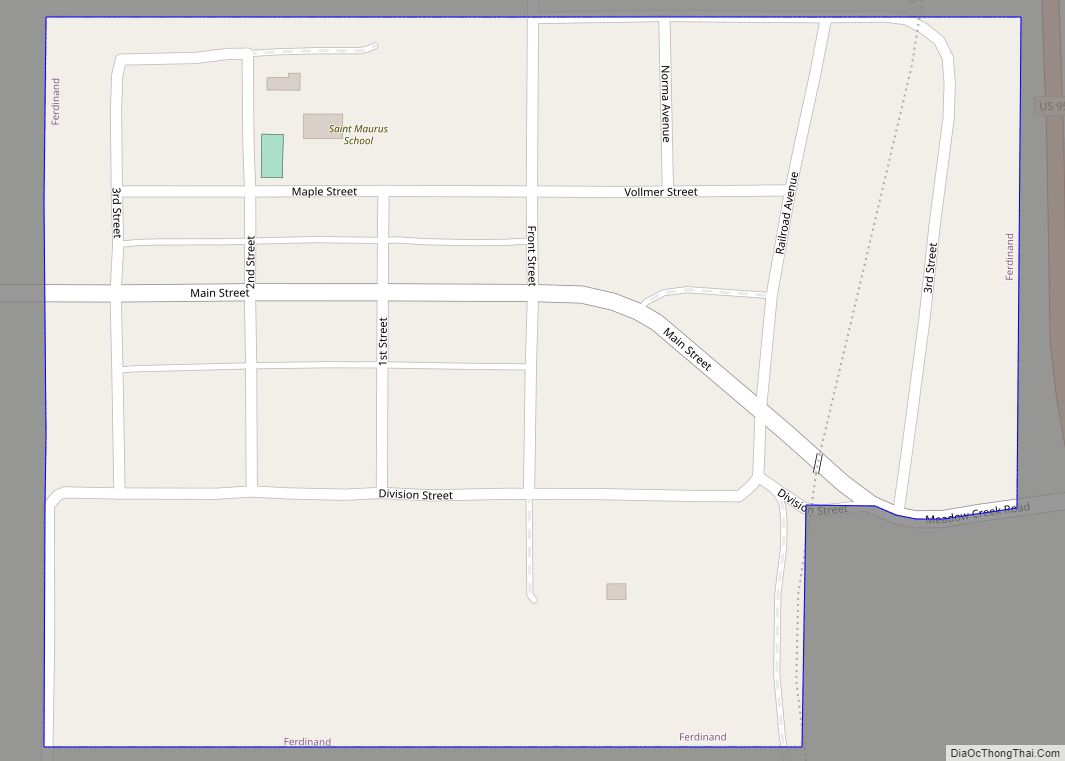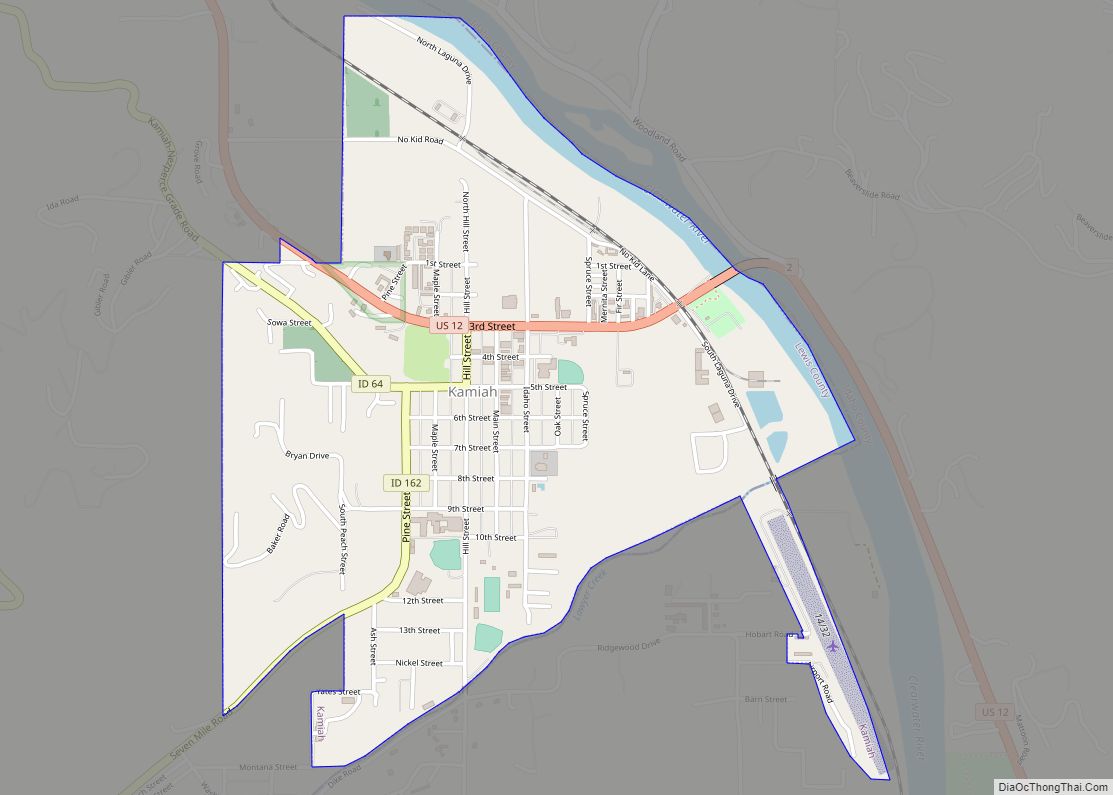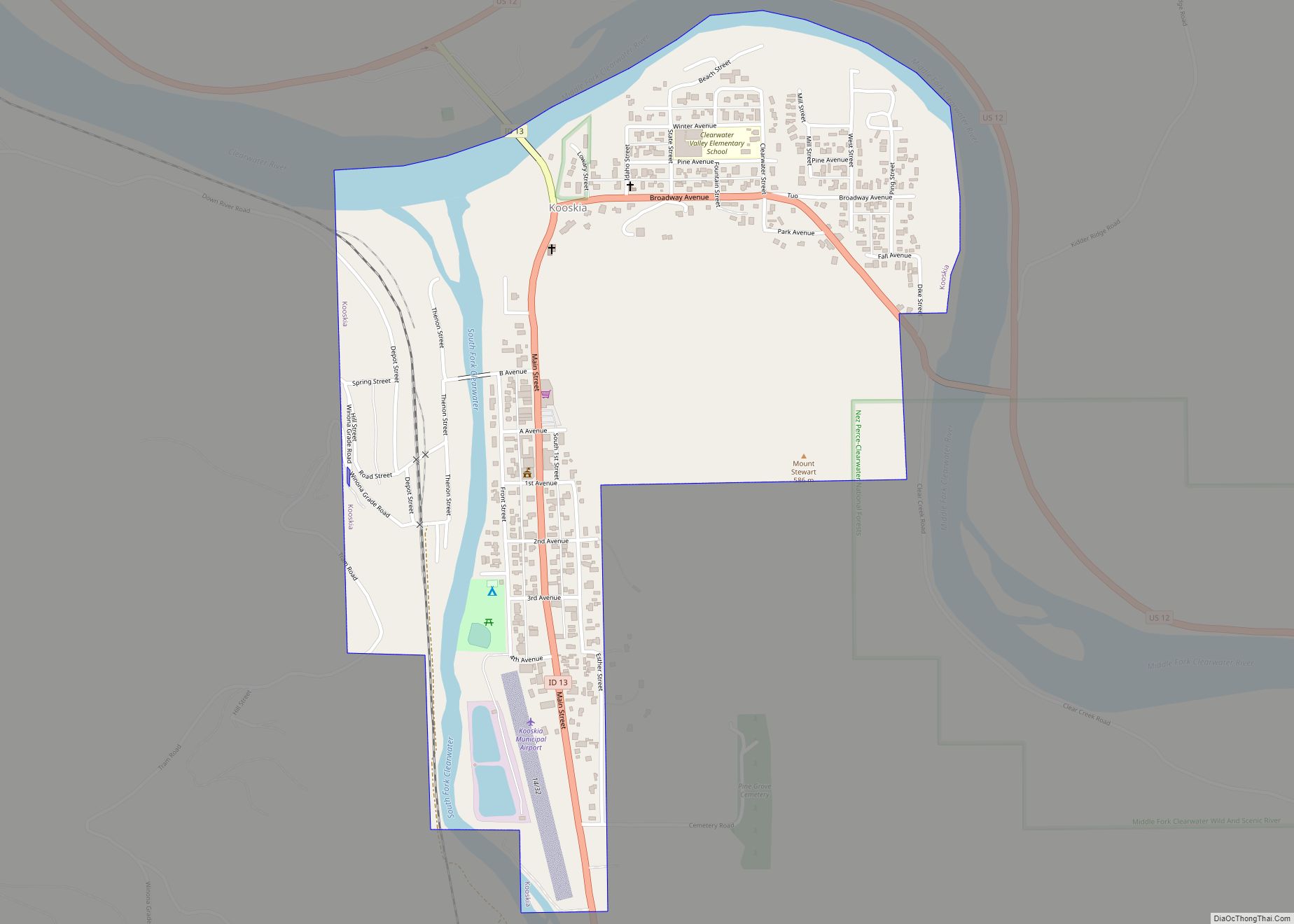Idaho County is a county in the U.S. state of Idaho, and the largest by area in the state. As of the 2020 census, the population was 16,541. The county seat is Grangeville. Previous county seats of the area were Florence (1864–68), Washington (1868–75), and Mount Idaho (1875–1902).
| Name: | Idaho County |
|---|---|
| FIPS code: | 16-049 |
| State: | Idaho |
| Founded: | February 4, 1864 |
| Named for: | Idaho |
| Seat: | Grangeville |
| Largest city: | Grangeville |
| Total Area: | 8,503 sq mi (22,020 km²) |
| Land Area: | 8,477 sq mi (21,960 km²) |
| Total Population: | 16,541 |
| Population Density: | 1.9/sq mi (0.75/km²) |
| Summer Time Zone (DST): | UTC−7 (PDT) |
| Website: | idahocounty.org |
Idaho County location map. Where is Idaho County?
History
Idaho County’s oldest non-native settlements are ghost towns. Discovery of gold occurred in succession at Elk City, Newsome, and Florence during the spring and summer of 1861. At the time, all of the settlements were within Shoshone County, Washington Territory. Thousands flocked to Florence. As a result, Idaho County was founded 162 years ago as a region of Washington Territory in 1861, named for a steamer called Idaho that was launched on the Columbia River in 1860. It was reorganized by the Idaho Territorial Legislature on February 4, 1864. In this context, the Idaho Territory and the State of Idaho are both preceded by the county name.
Settlements at Cottonwood, Mount Idaho, and Warrens were established in 1862. The Warrens settlement was a fractured settlement as a result of settlement there by both Union and Confederate affiliated miners. The Union affiliated miners on the northern edge of the settlement named their portion of the settlement Washington while the Confederate affiliated miners named their portion Richmond. Richmond dwindled by 1866 and Washington went on to become the county seat in 1868 and was the name of the settlement used in most government documents during the period of settlement. Out of all these settlements, only Cottonwood went on to eventually become one of Idaho County’s seven incorporated cities.
Idaho Territory conducted a census in 1863 and another in 1864. Population data was returned for both years for Warrens (660/521), Florence (575/254), Elk City (372/219), Slate Creek (216/117), Clearwater Station (212/76), and Newsome (62/24). For 1864, data was also returned for the settlements of Mount Idaho (74), Miller’s Camp (36), and Cottonwood (17). Between 1863 and 1864, Idaho County saw a decrease from 1,601 residents to 955.
Settlement at White Bird occurred some time prior to 1870 as a precinct under the same name is listed with 71 inhabitants at the 1870 census. Efforts to force White Bird’s band of Nez Perce tribesmen to the Nez Perce Reservation led to the Battle of White Bird Canyon in 1877. The town was established in 1891.
Grangeville emerged as a town at the 1880 census with 129 residents. It was incorporated as a city in 1904. Ferdinand and Kooskia were settled starting in 1895 and along with Cottonwood and Stites, were all incorporated prior to 1920. Development of Riggins started prior to 1930 with Riggins Village being incorporated in 1948.
Idaho County’s boundaries have changed more times than any other Idaho’s county with changes occurring on 20 separate dates over the county’s first 57 years. The majority of those changes were from boundary realignment with only three counties taking territory from Idaho County at their creation. Originating at 75,789 square miles, its original boundary under Washington Territory contained the southern portion of Idaho County, Idaho’s 34 southern counties, part of Ravalli County, Montana, and parts of Fremont, Lincoln, Park, Sublette, and Teton counties in Wyoming. Boise was partitioned off in January 1863 with the Payette River being the primary dividing line. In 1864, two separate acts transferred the portion in Montana to Missoula County, established the southern boundary at 44° 30′ latitude, and made slight adjustments in the northern boundary to define the county as one of Idaho Territory’s seven original counties. Three boundary adjustments were made with Nez Perce and Ada between 1866 and 1867 and Lemhi was created in 1869 from territory east of the junction of the Middle Fork and main Salmon Rivers. In 1873, the southern border was moved north to the divide between the main Salmon River with the Payette River and Middle Fork of Salmon River, bringing the county to its smallest historical land area of 2,901 square miles. The boundary adjustment of 1875 created a county very similar to present Idaho County containing an area of 8,165 square miles. Between 1879 and 1885, one change added territory on the Camas Prairie from Nez Perce while another brought back territory in present-day Adams, Valley, Custer, and Lemhi counties in the south. In 1887, territory was exchanged with Boise County dividing present Valley County between the two counties. One change in 1889 transferred territory to Custer County while another change finalized the county’s northern border at its present location. The southern border began to take shape after two changes in 1891 and 1895 exchanged territory between Washington and Idaho counties. Adjustments with Lemhi in 1903 and 1911 and the creation of Valley County in 1918 brought the county to its present boundary.
Idaho County is one of seven counties in the United States that has the same name as the state in which it lies. The other six are Arkansas, Hawaii, Iowa, New York, Oklahoma, and Utah.
Idaho County Road Map
Geography
According to the U.S. Census Bureau, the county has a total area of 8,503 square miles (22,020 km), of which 8,477 square miles (21,960 km) is land and 26 square miles (67 km) (0.3%) is water. It is the largest county by area in Idaho. The southeast portion of the Nez Perce Indian Reservation is in the county’s northwest corner. Due to the county’s size, it is the only county that touches Oregon and Montana.
Adjacent counties
- Clearwater County – north
- Missoula County, Montana – northeast
- Ravalli County, Montana – east
- Lemhi County – southeast
- Valley County – south
- Adams County – southwest
- Wallowa County, Oregon – west
- Nez Perce County – northwest
- Lewis County – northwest
National protected areas
- Bitterroot National Forest – (part)
- Clearwater National Forest – (part)
- Frank Church-River of No Return Wilderness – (part)
- Gospel Hump Wilderness
- Hells Canyon National Recreation Area – (part)
- Hells Canyon Wilderness – (part)
- Nez Perce National Forest
- Nez Perce National Historical Park – (part)
- Payette National Forest – (part)
- Salmon-Challis National Forest – (part)
- Selway-Bitterroot Wilderness – (part)
- Wallowa–Whitman National Forest – (part)
There are 4,431,720 acres (17,934.535 km, or 6,924.563 sq mi) of National Forest land within the county, more than in any county (or borough) outside of Alaska. National Forests and their acreage within the county are: Nez Perce National Forest 2,224,091; Clearwater National Forest 870,807; Payette National Forest 804,853; Bitterroot National Forest 464,108; Salmon National Forest 66,074; and Wallowa National Forest 1,787. The Nez Perce National Forest is located entirely within the county’s borders, and is the largest National Forest lying within a single county.
Time zones
Idaho County is one of the few counties in the United States with two time zones, divided by the Salmon River. Most of the county is in the Pacific Time Zone, but those areas south of the Salmon River are in the Mountain Time Zone.

